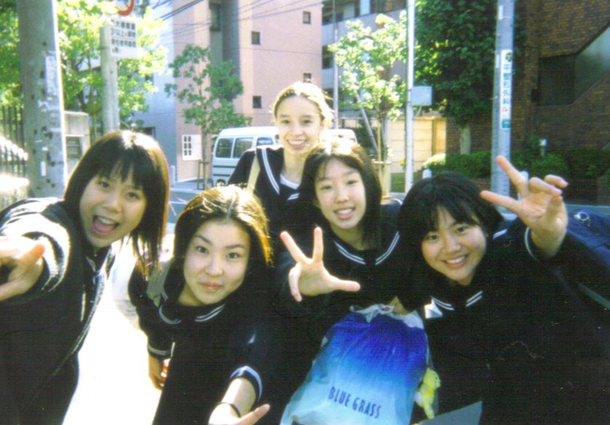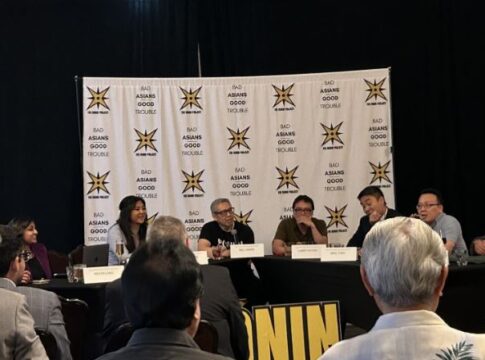
By Laylita Day
Being Hapa
Growing up half Asian in the rural, heavily White South was not easy. In the eyes of most people there, my mother was Asian, thus I was entirely Asian too, despite the fact that I am and look White. I was constantly labeled the “Chinese girl” and “ching chonged” at by the worst individuals. My state test exams always automatically had A for Asian in the race category box, thus even the teachers labeled me Asian without even asking me how I wanted to identify myself. Of course this was back in the 1990s and even the census did not have an option for multiracial people, but the point here is how people saw me as only one thing: Asian. I am not saying I would have labeled myself as White given the option, just that I found it frustrating how others “boxed” me without a second thought. This all changed when I moved to Japan.
Suddenly I was living in a nearly homogenous society and my “whiteness” went from invisible to as glaring as the sun. I was then the White American with the big nose. Being half Taiwanese did not help any either since the Japanese and Chinese have a not-so-great relationship. I learned just how xenophobic the Japanese people could be and heard numerous horror stories about life in Japan for foreigners. I was suddenly forced to carry around a foreigner identification card or I could be arrested. I was 15 years old when I got that card. I would get occasional rude stares or comments when I failed to understand or perform the proper actions, especially being called “stupid” because I could not speak Japanese. I had to attend regular Japanese public schools because anything else was out my father’s price range.
Whereas in America I had been bullied for being Asian, now in Japan I was being bullied for being American. It was a very strange turn of events that as a scared, shy teenager I was not able to handle.
Having to move as a kid is one thing. I had to leave behind friends and that was very hard on me. That, along with my parents’ divorce , moving to a foreign country where I did not speak the language or understand the culture, and being bullied on multiple levels eventually pushed me into depression and suicidal thoughts.
While I have moved past this sad time in my life, it was brought back to the surface after reading about the negative reactions the newest Miss Universe Japan received due to her being a “hafu,” half Japanese and half African American.
LATEST STORIES
Ariana Miyamoto was crowned the first multiracial Miss Universe Japan this year. Part of her reason for running for the beauty contest is to help break cultural barriers and fight discrimination against those who are not seen as Japanese enough. She too experienced bullying as a child, but it was her friend’s suicide that truly motivated her to run for Miss Universe Japan. Miyamoto’s friend, also mixed-race, had experienced so much bullying and hate that they ended up taking their own life. It is her friend that my teenage self can fully relate. Today I strive to be like Miyamoto and give a voice to racial bullying against mixed-race individuals. This is especially important considering how about 20,000 half Japanese people are born in Japan each year, according to NBC. Thus while the racial makeup of Japan is actively changing, the country’s racial viewpoints are not and it is hurting hafus on multiple fronts.
Miyamoto also states how there are few black media personalities in Japan. One that comes to my mind is the successful singer Crystal Kay. While not half Japanese, she was born and raised in Japan and is half African American and Korean. This shows a different type of hafu situation where one may be raised entirely like a fully Japanese person but still be separated by their actual racial makeup. Kay though has not really stated experiencing any severe negative situations and even said in an interview for Audrey magazine that she “never really had to explain myself often” and “people in Japan were just not used to multiracial people” so they rarely asked her about her identity.
Others have also written about their experiences growing up as “hafu” in Japan. Yumi Nakata writes on the blog Gaijin Pot about the bullying she received for being half South East Asian. She also mentions the famous saying that any minority or outsider in Japan quickly learns, “The nail that sticks out gets hammered down”. As I myself have seen, conformity and group mentality are the only ways to survive in Japan.
An interesting view that Nakata mentions is how Eurasian children are seen as exotic and often work as models. In my case, I am also technically Eurasian but no one would ever consider me to be model quality. Thus this viewpoint is not applicable for probably most Eurasian children. Yet the fashion world probably makes it seem like Eurasian people are more desired than they really are among regular society. This paints a very superficial and limited view of what Eurasians are capable of doing in Japan.
More important though is her statement about the difficulty some hafus may have in getting jobs because Japanese companies think that only a true Japanese person can deal with Japanese customers. This seems absolutely absurd to me. One is not 100% Japanese so one could not possibly know how to handle a 100% Japanese person? It is like saying you do not know every single word in a language, therefore you cannot speak the language at all. Being half something else does not override any hafus knowledge of the language or upbringing in Japanese culture. Getting not only Japanese companies but the Japanese public to realize this would greatly help remove the stigma, racism and limitations that many hafus face.
Nakata says she is more comfortable in America because she can just be herself there. Of course this is not true for all hafus; Nakata’s sisters are happy in Japan, but the culture of hammering down nails can mean that some hafus are not welcome in their own country. With small steps taken by people like Miyamoto and other hafus, maybe someday Japan will welcome the hafus. One suggestion Nakata makes is to call hafus “double” instead because they are not half of each culture but are fully both cultures. I support this seeing as how I am part of two cultures, not half of each culture.
Ryan Surdick, writing for the Japan Times, also has issues with the term half and hafu as he has a biracial son. Surdick feels that people calling his son hafu limits who his son is in other people’s minds. It defines his son as only one thing, a half Japanese person and this could cause identify issues later for his son as he grows up. Surdick states how people will ask if his son is half before asking anything else, such as age or name. This shows how appearance and ethnicity is more important (or at least more interesting) to Japanese people than any other characteristic when it comes to anything associated with foreigners. Japan’s nearly homogenous society makes this blatant racial profiling and stereotyping much more prominent.
He also asks how such “psychological microaggressions” of constantly not feeling like one fits in would affect a biracial person in Japan. I know that because of my foreignness, I never once felt like I fit in, yet at the same time I could say that growing up in the Japanese culture during my teen years changed me and I do view certain aspects of American culture differently from Americans because I did not spend my entire childhood there.
As for being White and Taiwanese, I was raised primarily in the American culture, which I felt was intensified because of living in the rural White South and then Japan, both places that my Taiwanese culture did not belong to in any way. Living in Southern California with my mom though started to change that and made me feel that it was more acceptable and easier to be Taiwanese and engage in Taiwanese culture. I feel less like other cultures are trying to suppress my Taiwanese heritage. Since there are so many different ethnic groups where I live, there is not one dictating how I should live my life or see myself as.
Yet I am not completely confident with engaging with my Taiwanese heritage after being dominated by others for so long, but I am trying. I found out there is a Taiwanese club at my university, yet I still have not attended any meetings, partly because I forget or do not have the time, but also there is a small part of me that is scared that I am not Taiwanese enough for them, that I am just a White-faced ABC, a Banana without the peel. Thus it is thoughts like these, brought about by a lifetime of “psychological microaggressions” and blatant bullying that Surdick is probably fearing for his son in a culture that sees a hafu first rather than waiting to know the person.
Perhaps what biracial people in Japan need to do is start their own #biraciallookslike. Jaxa Saxena started the hashtag on September 15 and it has been widely retweeted and featured in various articles online. The success of her hashtag here hopefully will encourage and inspire others about being biracial not just in American but overseas as well. For Japan, it may be just a small thing, but it could help bring awareness to the many biracial Japanese there and allow them to share their stories about life as a hafu or better yet as a double. It would also show that biracial pride is needed around the world.
Biracial people are not nails to be hammered down. We are just people. So stop calling us hafu, asking us where we are “from” and questioning whether we are “enough”. We are biracial. We are double. We are however we define ourselves, no matter where we are. No hammer needed.








Re: Being Hapa: Facing racial discrimination on multiple fronts. Taiwan and Japan have LONG had a great relationship. China and Japan, yeah, not so great…